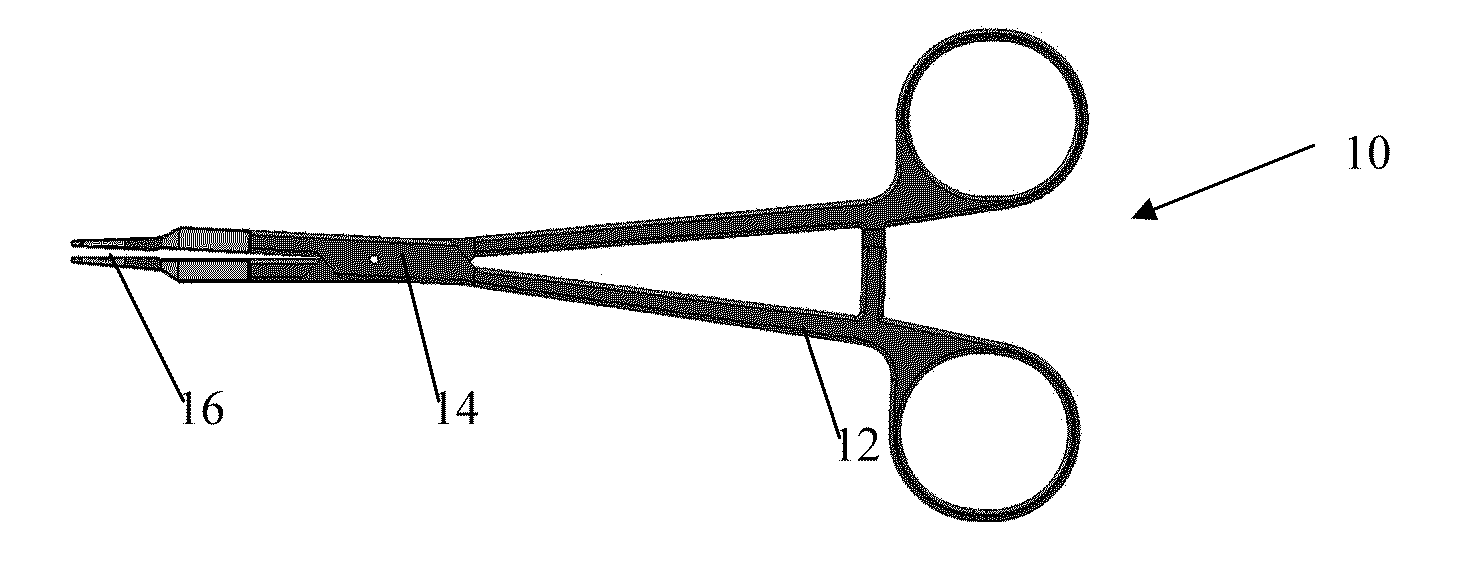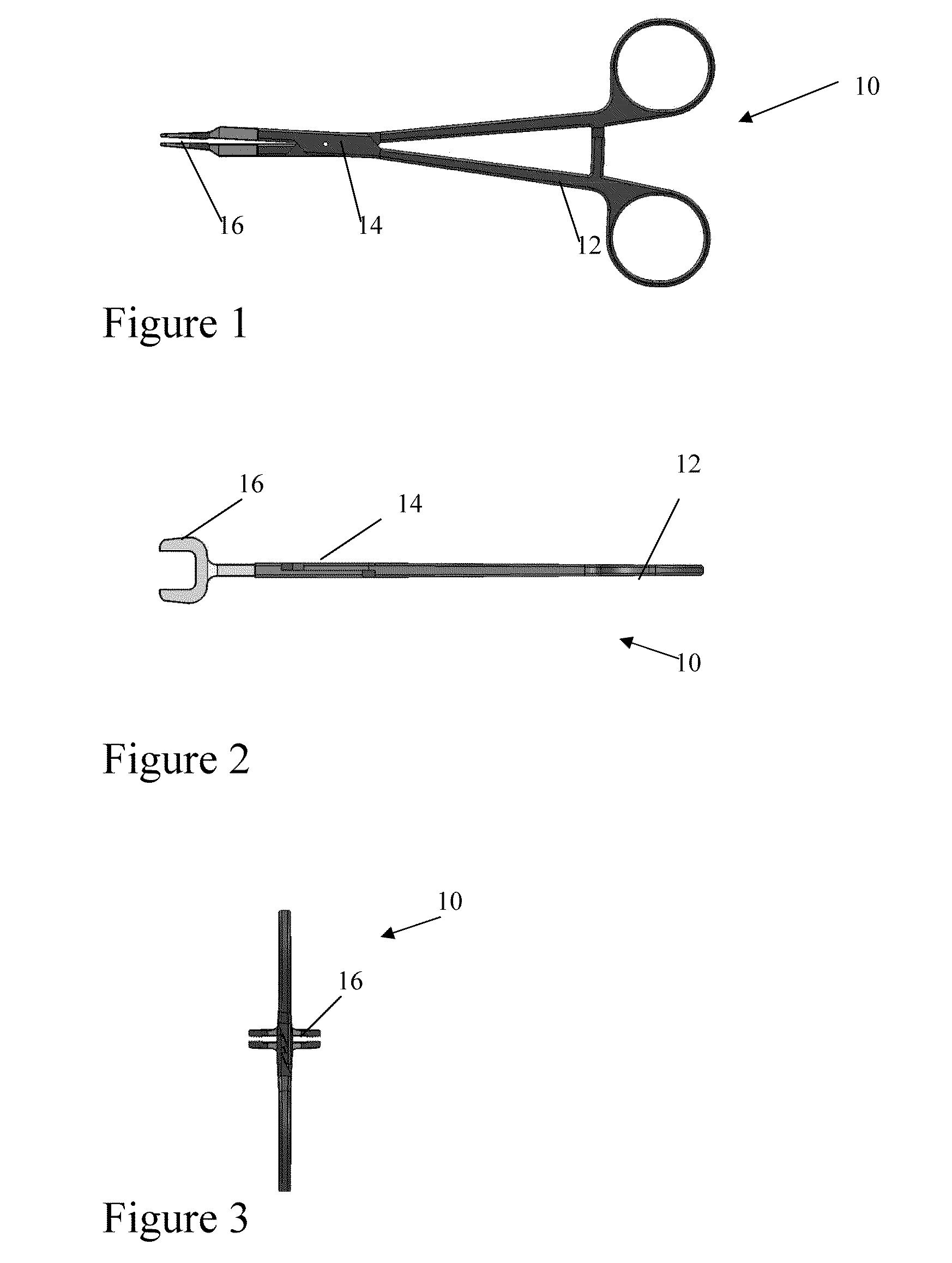Muscle biopsy clamp
a muscle biopsy and clamping technology, applied in the field of muscle biopsy clamps, can solve the problems of time-consuming, difficult, and expensive diffraction with lasers, and achieve the effects of enhancing tissue grasping/securement, minimizing tissue damage, and enhancing tissue securemen
- Summary
- Abstract
- Description
- Claims
- Application Information
AI Technical Summary
Benefits of technology
Problems solved by technology
Method used
Image
Examples
example i
Fourteen centimeter long stainless steel hemostat clamps (Model 3-113-14, Sabri Group, Pompano Beach, Fla., USA) were modified by attaching custom 1 cm wide serrated jaws to their ends (See FIGS. 1 through 6). The jaws were machined from stainless steel (316) blocks using wire electrical discharge machining (EDM) to achieve very tight tolerances (±0.0005 cm) between mating jaw serrations (See FIGS. 5 and 6). After the jaws were machined, they were welded to the hemostat jaws using tungsten inert gas (TIG) and polished. This machining process allowed the jaws to be sterilized using standard autoclaving and provided sufficient clamping pressure to prevent slippage of muscle fibers between the jaws.
To validate sarcomere lengths obtained using the clamp-based method, biopsies (n=23) of the tibialis anterior muscles of New Zealand White rabbits (n=19) were sampled. Animals were induced and maintained under gas anesthesia (isoflurane 2%) in accordance with the Veterans Administration Inst...
PUM
 Login to View More
Login to View More Abstract
Description
Claims
Application Information
 Login to View More
Login to View More - R&D
- Intellectual Property
- Life Sciences
- Materials
- Tech Scout
- Unparalleled Data Quality
- Higher Quality Content
- 60% Fewer Hallucinations
Browse by: Latest US Patents, China's latest patents, Technical Efficacy Thesaurus, Application Domain, Technology Topic, Popular Technical Reports.
© 2025 PatSnap. All rights reserved.Legal|Privacy policy|Modern Slavery Act Transparency Statement|Sitemap|About US| Contact US: help@patsnap.com



